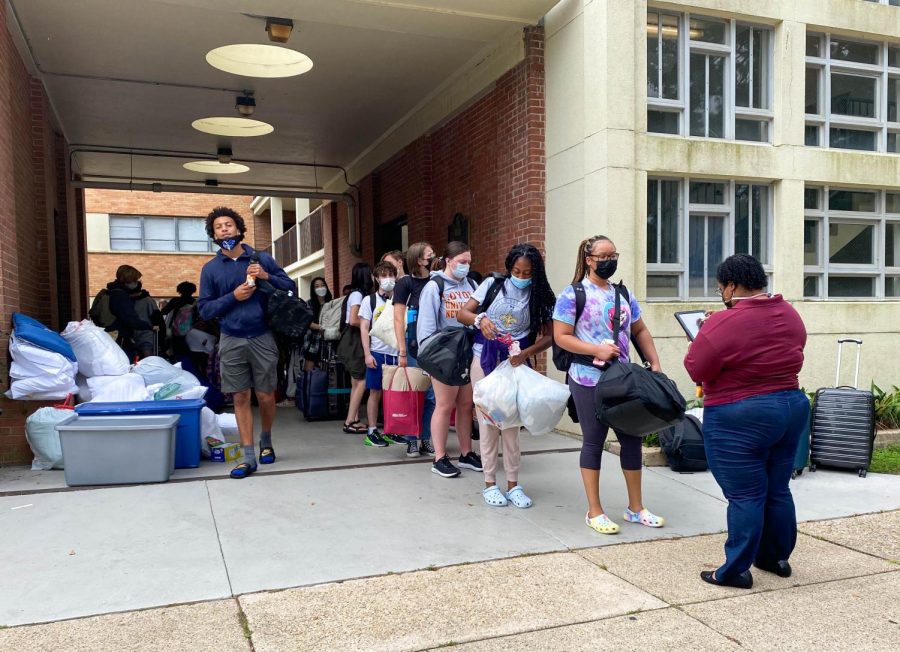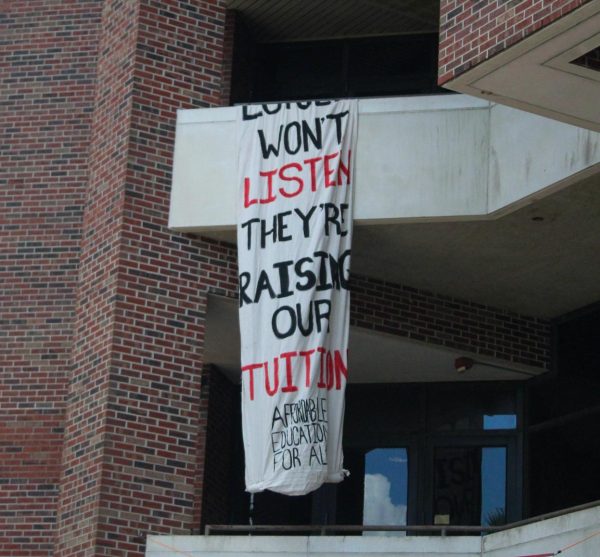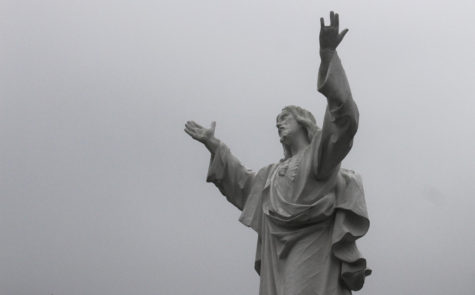Dorm evacuees find refuge at Spring Hill
WEB: Loyola students line up to leave Spring Hill College’s campus in September 2021. Spring Hill opened up its campus to students who were unable to evaucate after Hurricane Ida knocked that power out on Loyola’s campus. Courtesy of Spring Hill.
For one Loyola University freshman, the experience post-Hurricane Ida felt a lot like summer camp. Leslie Williams, a freshman pre-nursing student, was one of over 100 Loyola dorm residents that were evacuated to Spring Hill College after the hurricane.
After losing power, Loyola moved students stranded at Loyola to Spring Hill for more than a week while New Orleans recovered, according to Spring Hill, another Jesuit university in Mobile, Alabama. The university housed Loyola students once before during Hurricane Katrina sixteen years prior to Ida’s landfall, according to Spring Hill.
Williams’ family’s home in New Orleans also lost power post-hurricane. With grocery stores closed and food limited, he said he didn’t want to be a burden on his mom and brothers.
“I appreciate Loyola was able to have something in their back pocket for students like me,” said Williams.
Todd Warren, director of university police and emergency management, said he assisted in facilitating the transfer of students from Loyola’s dorms to the ones at Spring Hill. Warren said that once power was lost, the best decision was to bring students who couldn’t leave the dorms on their own to another location.
The primary plan when things like this happen would be to transfer students to Louisiana College where they can house about 100 students in their gym, said Warren. Louisiana College is situated near a small airport and uses the same meal supplier, Sodexo, which allows Loyola meal plans to work there, according to Warren. He said that Spring Hill is the best case scenario, but typically doesn’t work as they are also located along the Gulf and don’t always have room to accommodate students.
“We lucked out that Spring Hill had space,” he said.
The initial discovery that students were being evacuated from the dorms came suddenly, said Williams. Once he had decided he would be traveling with the University to Spring Hill, nervousness had set in, Williams said.
“We got on the buses, and we said goodbyes. It felt like the last day of high school all over again,” said Williams.
The students stayed in Walsh Hall on Spring Hill’s campus, said Chris Rice, director of residential life.
Williams said the dorms were “Biever-style,” the freshmen dorm on Loyola’s campus, and nice for such short notice.
According to Rice, he along with Associate Director Jay Davis, Resident Ministers Christine Johnson and Ken Weber, and Jesuit Fr. Nathan O’Halloran, went with students to Spring Hill.
Williams said he knew several residential assistants who joined them as well and maintained their duties even on a completely different campus.
Despite being at a different university, he said the students were kept busy with things like a movie night, music event, and beach day.
“I’ve never been to a summer camp but I feel like that is what it would have been like,” said Williams.
Williams said he made friends with several Loyola students he was traveling with, along with some Spring Hill students he met around campus.
The sense of community Williams felt while traveling with the university was something he said he would never forget.
“Being able to experience life at another university made me realize how special Loyola is,” said Williams.

Jackie Galli is proud to be one of the editors in chief at The Maroon this year. She is a senior mass communication major with a concentration in journalism,...





